| F-14 Tomcat | |
|---|---|
| An F-14A Tomcat from the USS Nimitz (CVN-68) during Operation Southern Watch, with its wings fully-swept | |
| Role | Interceptor, Air superiority fighter, Multirole fighter |
| Manufacturer | Grumman |
| First flight | 21 December 1970 |
| Introduction | September 1974 |
| Retired | United States Navy: 22 September 2006 |
| Status | Active service with Iran |
| Primary users | United States Navy (retired) Islamic Republic of Iran Air Force |
| Number built | 712 |
| Unit cost | US$38 million (1998) |
The F-14 first flew in December 1970. It first deployed in 1974 with the U.S. Navy aboard USS Enterprise (CVN-65), replacing the F-4 Phantom II. The F-14 served as the U.S. Navy's primary maritime air superiority fighter, fleet defense interceptor and tactical reconnaissance platform. In the 1990s it added the Low Altitude Navigation and Targeting Infrared for Night (LANTIRN) pod system and began performing precision strike missions.[1] The F-14 was retired from the active U.S. Navy fleet on 22 September 2006, having been replaced by the F/A-18E/F Super Hornet.[2] As of 2009, the F-14 was only in service with the Islamic Republic of Iran Air Force, having been exported to Iran in 1976 when the US had amicable diplomatic relations with the nation.
Contents
|
Development
Background
Beginning in the late 1950s the U.S. Navy sought a long-range, high-endurance interceptor to defend its carrier battle groups against long-range anti-ship missiles launched from Soviet jet bombers and submarines. The Navy needed a Fleet Air Defense (FAD) aircraft with a more powerful radar, and longer range missiles than the F-4 Phantom II to intercept both enemy bombers and missiles.[3] The Navy was directed to participate in the Tactical Fighter Experimental (TFX) program with the U.S. Air Force by then-Secretary of Defense Robert McNamara, who wanted "joint" solutions to service aircraft needs to reduce development costs. The Navy strenuously opposed the TFX, which incorporated the Air Force's requirements for a low-level attack aircraft, fearing the compromises would severely affect the aircraft. The prior example of the F-4 Phantom II, which was a Navy and Marine Corps program later adopted by the Air Force, was the order of the day.However, weight and performance issues plagued the U.S. Navy F-111B variant for TFX and would not be resolved to the Navy's satisfaction. The F-111 manufacturer General Dynamics partnered with Grumman on the Navy F-111B. With the F-111B program in distress, Grumman began studying improvements and alternatives. In 1966 the Navy awarded Grumman a contract to begin studying advanced fighter designs. Grumman narrowed down these designs to its 303 design.[4] Vice Admiral Thomas Connolly, Deputy Chief of Naval Operations for Air Warfare, took the developmental F-111A variant for a flight and discovered it had difficulty going supersonic and had poor carrier landing characteristics. He later testified to Congress about his concerns against the official Department of the Navy position, and in May 1968 Congress stopped funding for the F-111B, allowing the Navy to pursue an answer tailored to their requirements. The name, "Tomcat," was partially chosen to pay tribute to Admiral Connelly, as the nickname, "Tom's Cat," had already been widely used by the manufacturer, although the name also followed the Grumman tradition of naming its fighter aircraft after felines.[5]
VFX
In July 1968 the Naval Air Systems Command (NAVAIR) issued a Request for Proposals (RFP) for the Naval Fighter Experimental (VFX), a tandem two-seat fighter with maximum speed of Mach 2.2 and a secondary close air support role.[6] The VFX requirements called for a built-in M61A Vulcan cannon and powered with twin engines. It would be equipped with either six AIM-54 Phoenix missiles or a combination of six AIM-7 Sparrow and four AIM-9 Sidewinder air-to-air missiles. Bids were received from General Dynamics, Grumman, Ling-Temco-Vought, McDonnell Douglas and North American Rockwell.[7] Four of the bids incorporated variable-geometry wings. McDonnell Douglas and Grumman were selected as finalists in December 1968, and Grumman won the contract in January 1969. Grumman had discussed its early design mock-ups and cost projections with Naval authorities as an alternative to the F-111B.[N 1]The winning Grumman design reused the TF30 engines from the F-111B, though the Navy planned on replacing them with the F401-PW-400 engines then under development by Pratt and Whitney for the Navy (in parallel with the related F100 for the USAF).[8] Though lighter than the F-111B, it was still the largest and heaviest U.S. fighter to ever fly from an aircraft carrier, its size a consequence of the requirement to carry the large AWG-9 radar and AIM-54 Phoenix missiles, also from the F-111B and an internal fuel load of 16,000 lb (7,300 kg). The F-14 would also share a similar inlet duct, wing, and landing gear geometry with Grumman's A-6 Intruder.[9]
Upon being granted the contract for the F-14, Grumman greatly expanded its Calverton, Long Island, New York facility to test and evaluate the new swing-wing interceptor. Much of the testing as well as the first few in-flight mishaps, including the first of many compressor stalls and ejections took place over Long Island Sound. In order to save time and forestall interference from Secretary McNamara, the Navy skipped the prototype phase and jumped directly to full-scale development; the Air Force took a similar approach with its F-15.[10]
The F-14 first flew on 21 December 1970, just 22 months after Grumman was awarded the contract, and reached Initial Operational Capability (IOC) in 1973. The United States Marine Corps was initially interested in the F-14 as an F-4 Phantom II replacement and went so far as to send pilots and radar intercept officers to Fighter Squadron One Twenty-Four (VF-124), the Pacific Fleet Replacement Squadron for the F-14, to train as instructors. The Marine Corps was never fully sold on the aircraft and pulled out when the stores management system for ground attack munitions was left undeveloped, leaving the aircraft incapable of dropping air-to-ground munitions. These were not developed until the 1990s.[10]
Firing trials involved the launch against simulated targets of every type, from cruise missiles to high flying bombers. The first AIM-54 Phoenix launch by a Tomcat occurred on 28 April 1972.[11] In November of that year, a single launch was achieved against an incoming target at over 200 km (120 mi), this being outside the normal range for the Tomcat weapon system of 166 km (103 mi). Another unusual test was made in 22 November 1973, with six missiles fired in 38 seconds, at Mach 0.78 and 24,800 ft (7,600 m), with four scoring direct hits. This missile entered service at the beginning of 1975, just as the Vietnam War was coming to an end.
Improvements and changes
With time, the early versions of all the missiles were replaced by more advanced versions, especially with the move to full solid-state electronics that allowed better reliability, better ECCM and more space for the rocket engine. So the early arrangement of the AIM-54A Phoenix active-radar air-to-air missile, the AIM-7E-2 Sparrow Semi-active radar homing air-to-air missile, and the AIM-9J Sidewinder heat-seeking air-to-air missile was replaced in the 1980s with the B (1983) and C (1986) version of the Phoenix, the F (1977), M (1982), P (1987 or later) for Sparrows, and with the Sidewinder, L (1979) and M (1982). Within these versions there are several improved batches (for example, Phoenix AIM-54C++).[11]The Tactical Airborne Reconnaissance Pod System (TARPS) was developed in the late 1970s for the Tomcat. The TARPS reconnaissance pod was carried on the right rear fuselage tunnel station and required additional connections. Approximately 65 F-14As and all F-14Ds were modified to carry the pod.[12] The system was primarily controlled by the RIO in the back seat who had a specialized TARPS display to observe reconnaissance data.[13] TARPS system was introduced in 1980.[13] The TARPS was upgraded with digital camera in 1996 with the "TARPS Digital (TARPS-DI)". The digital camera was further updated beginning in 1998 with the "TARPS-CD" configuration.[13]
Some of the F-14A aircraft underwent engine upgrades to the GE F110-400 in 1987. These upgraded Tomcats were redesignated F-14A+, which was later changed to F-14B in 1991.[14] The F-14D variant was developed during this time. It included the GE F110-400 engines with newer digital avionics systems including a glass cockpit. The F-14D also received systems for Link 16 datalink for secure exchange of data.[15] Tomcats also benefited from the Digital Flight Control System (DFCS). The DFCS improved handling qualities behind the aircraft carrier, at high angle of attack, and in air combat maneuvering situations.
Adding ground attack capability
In the 1990s, with the pending retirement of the A-6 Intruder, the F-14 air-to-ground program was resurrected. The first experiments with bombs were carried out in the late 1980s. However, the main task of the F-14 was air defense in Operation Desert Storm, so most air-to-ground missions were left to A-7 and F/A-18 squadrons. The F-14 was cleared operationally to drop basic iron bombs in 1992. To provide for use of precision munitions, the remaining F-14As and F-14Bs underwent an upgrade program. The upgrade included new digital avionics systems, improved cockpit displays, structural improvements and improved defensive systems. The upgraded fighters had avionics approximately comparable to the F-14Ds and were designated F-14A (Upgrade) and F-14B (Upgrade), respectively.[12]
By 1994 Grumman and the Navy were proposing ambitious plans for Tomcat upgrades to plug that gap between the retirement of the A-6 and F/A-18E/F Super Hornet entering service. However, the upgrades would have taken too long to implement to meet the gap, and were priced in the billions; Congress considered this too expensive for an interim solution.[12] A quicker and inexpensive upgrade was devised instead using the Low Altitude Navigation and Targeting Infrared for Night (LANTIRN) targeting pod system. The LANTIRN pod was fitted to provide the F-14 with a forward-looking infrared (FLIR) camera for night operations and a laser target designator to direct laser guided bombs (LGB).[16]
Although LANTIRN is traditionally a two-pod system, with an AN/AAQ-13 navigation pod with terrain-following radar and a wide-angle FLIR, along with an AN/AAQ-14 targeting pod with a steerable FLIR and a laser target designator, the decision was made to only use the targeting pod. The Tomcat's LANTIRN targeting pod featured some improvements over its baseline configuration, most significantly a Global Positioning System / Inertial Navigation System (GPS-INS) capability that allowed a Tomcat to find its own location at any time. The pod was carried on the right wing glove pylon.[16]
Fit of the LANTIRN pod did not require any updates to the F-14's own system software, which would have substantially increased the time and expense of the upgrade. Although the LANTIRN Pod is designed to operate on a MIL-STD-1553B bus, which was not present on the F-14A or B variants, Martin Marietta designed an interface card that fit into the LANTIRN controller box that allowed carriage by all Tomcat models. The RIO received pod imagery on a 10" Programmable Tactical Information Display (PTID) or another Multi-Function Display in the F-14D,[17][18] and guided LGBs using a new hand controller. Initially the hand controller replaced the RIO's TARPS control panel, meaning a Tomcat configured for LANTIRN couldn't carry TARPS and the reverse, but eventually a workaround was developed that allowed a Tomcat to carry LANTIRN or TARPS as needed.[16] An upgraded LANTIRN named "LANTIRN 40K" with 40K laser allowing improved operation up to 40,000 ft (12,000 m) was introduced into service in 2001[16] followed by Tomcat Tactical Targeting (T3) and Fast Tactical Imagery (FTI) upgrades provided precise target coordinate determination and ability to transmit images from the LANTIRN pod.
Tomcats also added the ability to carry the GBU-38 Joint Direct Attack Munition (JDAM) in 2003, giving it the option of a variety of LGB and GPS-guided weapons.[19] Some F-14Ds were upgraded in 2005 with a ROVER III Full Motion Video (FMV) downlink, a system that transmits real-time images from the aircraft's sensors to the laptop of Forward Air Controller (FAC) on the ground.[20]
Design
Overview
The F-14 Tomcat was designed as both an air superiority fighter and a long-range naval interceptor.[21][22][23] The F-14 has a two-seat cockpit with a canopy that affords all-round visibility. It features variable geometry wings that swing automatically during flight. For high-speed intercept, they are swept back and they swing forward for lower speed flight.[11] It was designed to improve on the F-4 Phantom's air combat performance in most respects.[21] The F-14's fuselage and wings allow it to climb faster than the F-4, while the twin-tail arrangement offers better stability. The F-14 is equipped with an internal 20 mm M61 Vulcan Gatling-type gun mounted on the left side, and can carry AIM-54 Phoenix, AIM-7 Sparrow, and AIM-9 Sidewinder anti-aircraft missiles.Fuselage and wings
The fuselage consists of a large flat area called the "pancake" between the engine nacelles and, by itself, provides more than half of the F-14's aerodynamic lifting surface.[24] Fuel, electronics, flight controls, and the wing-sweep mechanism are all housed in the fuselage "pancake". The wings pivot from two extensions on either side of the "pancake", called wing gloves. The twin engines are housed in nacelles below and slightly to the rear, with the fuselage smoothly blending into the shape of the exhaust nozzles. The nacelles are spaced apart 1 to 3 ft (0.30 to 0.91 m). This produces a wide tunnel between the nacelles which causes some drag, but adds considerable lift and pitching ability. The resultant tunnel provides space to carry Phoenix or Sparrow missiles, assorted bombs, or the TARPS reconnaissance pod, and increases fuel capacity and room for equipment.[11]The F-14's wing sweep can be varied between 20° and 68° in flight,[25] and can be automatically controlled by the Central Air Data Computer when the pilot selects "auto" wingsweep mode. This maintains the wing sweep to give the optimum lift-to-drag ratio as the Mach number varies, but the system can be manually overridden by the pilot if necessary.[11] When the aircraft is parked, the wings can be "overswept" to 75°, where they overlap the horizontal stabilizers to save space on crowded carrier decks. In an emergency, the F-14 can land with the wings fully swept to 68°,[11] although this is far from optimum and presents a significant safety hazard due to significantly increased airspeed. An aircraft is typically diverted from the aircraft carrier to a landing field ashore in the rare event that would occur. The F-14 has also flown and landed safely with the wings swept asymmetrically even from an aircraft carrier in emergencies.[26]
The wings have a two-spar structure with integral fuel tanks. Much of the structure, including the wing box, wing pivots and upper and lower wing skins is made of titanium,[11] a light, rigid and strong material, but also difficult to weld, and costly. Ailerons are not fitted, with roll control being provided by wing mounted spoilers at low speed (which are disabled if the sweep angle exceeds 57°), and by differential operation of the all-moving tailerons at high speed.[11] Full-span slats and flaps are used to increase lift both for landing and combat, with slats being set at 17° for landing and 7° for combat, while flaps are set at 35° for landing and 10° for combat.[11] The twin tail layout helps in maneuvers at high AoA (angle of attack) while reducing the height of the aircraft to fit within the limited roof clearance of hangars aboard aircraft carriers. Two under-engine nacelle mount points are provided for external fuel tanks carrying an additional 4,000 lb (1,800 kg) of fuel.
Two triangular shaped retractable surfaces, called glove vanes, were originally mounted in the forward part of the wing glove, and could be automatically extended by the flight control system at high Mach numbers. They were used to generate additional lift ahead of the aircraft's center of gravity, thus helping to compensate for the nose-down pitching tendencies at supersonic speeds. Automatically deployed at above Mach 1.4, they allowed the F-14 to pull 7.5 g at Mach 2 and could be manually extended with wings swept full aft. They were later disabled, however, owing to their additional weight and complexity.[11]
The air brakes consist of top-and-bottom extendable surfaces at the rearmost portion of the fuselage, between the engine nacelles. The bottom surface is split into left and right halves, with the arrestor hook hanging between the two halves. This arrangement is sometimes called the "castor tail",[27] or "beavertail".[28] The Tomcat has fully mechanical flying controls,[11] with the only exception being the spoilers, which are hydro-electrically driven.
Engines and landing gear
Two rectangular air intakes located under the wings fed two Pratt & Whitney TF30 (or JT10A) engines, which were relatively powerful for the time (5.670/9.480 kg/t) and being turbofans allowed reduced fuel consumption while cruising,[29] which was important for long patrol missions.Both air intakes have movable ramps and bleed doors that are operated by the air data computer to enable enough air to enter the engine while keeping shockwaves away from the engine. The exhausts also feature variable nozzles with moving petals that open or close depending on engine state. The TF30 engine left much to be desired both in power and reliability. John Lehman, Secretary of the Navy, told Congress that the F-14/TF30 combination was "probably the worst engine/airframe mismatch we have had in years" and said that the TF30 was "a terrible engine",[25][27] with F-14 accidents attributed to engine failures accounting for 28% of overall losses. Cracks in the turbines were dangerous to the point that the engine bay was reinforced in case of blade failure, to help reduce damage to the rest of the aircraft. The TF30 engines were also extremely prone to compressor stalls, which could easily result in loss of control due to the wide engine spacing, which causes severe yaw oscillations and can lead to an unrecoverable flat spin. At specific altitudes, the exhaust from a launched missile could cause the engine compressor to stall. This resulted in the development of a bleed system that temporarily reduced the power of the engine and blocked the frontal intake during missile launch. The overall thrust-to-weight ratio at maximum takeoff weight is around 0.56, which does not compare favorably with the F-15A's ratio of 0.85.[30] The aircraft had an official maximum speed of Mach 2.34.[30] Internal fuel capacity is 2,400 USgal (9,100 l): 290 USgal (1,100 l) in each wing, 690 USgal (2,600 l) in a series of tanks aft of the cockpit, and a further 457 USgal (1,730 l) in two feeder tanks. It can carry two 267 USgal (1,010 l) external drop tanks under the engine intakes.[11] There is also an air-to-air refueling probe, which folds into the starboard nose. The F-14 with General Electric F110 engines had a thrust-to-weight ratio of 0.73 at maximum weight and 0.88 at normal takeoff weight.[30]
The undercarriage is very robust, in order to withstand the harsh takeoffs and landings necessary for carrier operation. It comprises a double nose wheel and widely spaced single main wheels. There are no hardpoints on the sweeping parts of the wings, and so all the armaments are fitted on the belly between the air intakes and on pylons under the wing gloves (external fuel tanks can also be mounted directly below the intakes to increase the F-14's range, as seen in the image above).[31]
Avionics and flight controls
The cockpit has two seats, arranged in tandem. The pilot and radar intercept officer (RIO) sit in Martin-Baker GRU-7A rocket-propelled ejection seats, rated from zero altitude and zero airspeed up to 450 knots.[32] They have a 360° view in a canopy that is also fitted with four mirrors, one for the RIO and the others for the pilot. The canopy is still fairly traditional; being in three parts, but the overall structure is large and gives good visibility. The crews have classical controls and many older instruments, with an analog-digital hybrid lay out. Only the pilot has flight controls.[11] No dual control version was ever made for the F-14, so the pilot starts to learn how to fly the machine using other aircraft and simulators. The main control systems are a HUD made by Kaiser, a VDI and a HSD display, that gives data on airspeed, navigation and other information.The Tomcat was also notable for its Central Air Data Computer, the integrated flight control system used in the early versions of the fighter. It used a MOS-based LSI chipset, the MP944, making it a candidate for the first microprocessor design in history. The CADC was designed and built by Garrett AiResearch.[33]
The nose of the aircraft is large because it carries not only the two person crew, but also a large number of avionics systems. The ECM and navigation suite are extremely comprehensive and complex. The main element is the Hughes AWG-9 X-band radar, which in the initial version included a lightweight 5400B digital system[11] with 32 kilobytes of RAM. The antenna dish is a 36 in (91 cm) wide planar array, uses 10 kW of power, and has integrated IFF antennas. There are available several search and tracking modes, such as Track-While-Scan (TWS), Range-While-Search (RWS), Pulse-Doppler Single-Target Track (PDSTT), and Jam Angle Track (JAT). A maximum of 24 targets can be tracked simultaneously, and six can be engaged in TWS mode up to around 60 mi (97 km). Pulse-only STT mode has a maximum range of around 96 statute miles (150 km). The maximum search range can exceed 120 statute miles (190 km) and even a fighter can be locked onto at around 72 - 90 statute miles (120–140 km). Cruise missiles are also possible targets with the AWG-9, since this radar can lock onto and track even small objects at low altitude when in a Pulse-Doppler mode.[11] The radar antenna dish is in the nose, and most of the radar avionics are located just behind the nose, near the pilot's position. Other avionics (such as IFF, communication radios, direction-finding equipment, etc.) are near the RIO's position, and are mostly integrated into the AWG-9 display system.
Tomcats also feature electronic countermeasures (ECM) and radar warning (RWR) systems, chaff/flare dispensers in the tail, fighter-to-fighter data link, and a precise inertial navigation system.[11] The early navigation system was purely inertial. Initial coordinates were programmed into the navigation computer, and a gyroscope in the system would track the aircraft's every motion. These aircraft motions were sent to the navigation computer, allowing it to calculate the jet's distance and direction from the initial starting point. Later, GPS was integrated into this inertial system, providing not only more precise navigation, but providing redundancy in case either system failed.
The chaff/flare dispensers were located on the belly, at the very tip of the tail, just to one side of the arresting hook. The dispenser contained several cylinders, into which either flares or chaff could be loaded in any combination. The RWR system was arranged with 4 antennae around the aircraft, and could roughly calculate the direction and the distance of many different types of radar from various aircraft and missile types. The RWR set could also display the status of the tracking aircraft's radar.[34] It could differentiate between search radar, tracking radar, and missile-homing radar. The electronic countermeasures system could analyze incoming radar signals and send confusing radar signals back to the source.
The original set of sensors also comprised an infrared sensor under the nose in a "chin pod": it was AN/ALR-23 with indium antimonide detectors, cooled by a self-contained Stirling cycle cryogenic system, but this proved ineffective, and was replaced with a new system. This was an optical system, Northrop AAX-1, also called TCS (TV Camera Set) and was used to help pilots visually identify and track aircraft, at least on day missions,[11] up to a range of more than 60 miles (97 km) for large aircraft (a zoom function was included to help with small fighters). The TCS could be "slaved" to the radar to follow whatever the radar is tracking, and the radar could be slaved to the TCS to track whatever the camera "sees." Both the crew have access to the images on their displays. Despite its utility, for a long time most F-14s did not have the system added. Bill Gunston reported that even in 1983, only one in eight aircraft had the system fitted.[35]
A dual IR/TCS system was adopted for the later F-14D variant,[36] with an ECM antenna fitted as well in the same mast. This meant Tomcats could be configured with only an ECM antenna, or the IR sensor, or TCS, or many combinations thereof. The Tomcat's ESM system consists of many subsystems: RWR, ECM, and chaff/flare dispensers in various parts of the fuselage, nose, tail and wings. This was a marked difference with many previous fighter aircraft in that some did not even include a simple RWR.
Armament
The Tomcat was originally designed to combat both highly maneuverable aircraft and the Soviet cruise missile/bomber threat.[23] As a result, the aircraft was designed to act effectively in every aspect of air combat. For weaponry, the Tomcat was designed as a platform for the formidable AIM-54 Phoenix, but unlike the stillborn F-111B it could also engage medium and short range threats.[21][23][24] As such, the F-14 was a full air superiority fighter and not only a long range interceptor.[23] It had the standard US gun, the M61 Vulcan, with 676 rounds and 4,000 or 6,000 RPM selectable (although the latter is rarely used due to jamming and overheating issues). Over 6,700 kg (15,000 lb) of stores could be carried for combat missions in several hard points under the belly and on wing-mounted hardpoints. Commonly, this meant a maximum of two - four Phoenixes or Sparrows on the belly stations, two Phoenixes/Sparrows on the wing hardpoints, and two Sidewinders on the wing hardpoints. On occasion, four AIM-7 Sparrows (on the belly) and four AIM-9 Sidewinders (on the wingmounts) were carried, similar to the F-4 and F-15.The maximum load of six Phoenix missiles was never used operationally. Although early testing proved it was possible, there was never a threat requirement to engage six hostile targets simultaneously and the load was too heavy to recover aboard an aircraft carrier. The Phoenix missile has been used twice in combat situations with the US Navy, both over Iraq in 1999,[37][38][39] but the missiles didn't score any kills.
During the height of Cold War operations in the late 1970s and 1980s, the typical weapon loadout on carrier-deployed F-14s was rarely more than one AIM-54 Phoenix, normally augmented by two AIM-9 Sidewinders, two AIM-7 Sparrow IIIs, a full loadout of 20 mm ammunition for the M61 cannon and two drop tanks.
Operational history
Main article: F-14 Tomcat operational history
The F-14 Tomcat was the US Navy's primary air superiority fighter and tactical reconnaissance platform from 1972 to 2006. The F-14 has served in Iran's Air Force from 1978 to the present.The F-14 began replacing the F-4 Phantom II in USN service starting in September 1974 with squadrons VF-1 Wolfpack and VF-2 Bounty Hunters aboard USS Enterprise (CVN-65) and participated in the American withdrawal from Saigon. The F-14 had its first kills on 19 August 1981 over the Gulf of Sidra in what is known as the Gulf of Sidra incident after two F-14s from VF-41 Black Aces were engaged by two Libyan Su-22 "Fitters". The F-14s evaded the short range heat seeking AA-2 "Atoll" missile and returned fire, downing both Libyan aircraft. U.S. Navy F-14s once again were pitted against Libyan aircraft on 4 January 1989, when two F-14s from VF-32 shot down two Libyan MiG-23 "Floggers" over the Gulf of Sidra in a second Gulf of Sidra incident.

An F-14A Tomcat from VF-114 intercepting a Soviet Tu-95RT "Bear-D" maritime reconnaissance aircraft.

An F-14A Tomcat from VF-32 during Desert Storm. A KC-135 Stratotanker and two EA-6B Prowlers can be seen in the background.
The participation of the F-14 Tomcat in the 1991 Operation Desert Storm consisted of Combat Air Patrol (CAP) over the Red Sea and Persian Gulf and overland missions consisting of strike escort and reconnaissance. Until the waning days of Desert Storm, in-country air superiority was tasked to USAF F-15 Eagles due to the way the Air Tasking Orders (ATO) delegated primary overland CAP stations to the F-15 Eagle. The governing Rules of Engagement (ROE) also dictated a strict Identification Friend or Foe (IFF) requirement when employing Beyond Visual Range weapons such as the AIM-7 Sparrow and particularly the AIM-54 Phoenix. This hampered the Tomcat from using its most powerful weapon. Furthermore, the powerful emissions from the AWG-9 radar are detectable at great range with a radar warning receiver. Iraqi fighters routinely displayed countertactics as soon as the Tomcats "lit them up" with the AWG-9.[41][42] The US Navy suffered its only F-14 loss from enemy action on 21 January 1991 when b/n 161430, an F-14A upgraded to an F-14A+, from VF-103 was shot down by an SA-2 surface-to-air missile while on an escort mission near Al Asad airbase in Iraq. Both crew survived ejection with the pilot being rescued by USAF Special Operations Forces and the RIO being captured and held by Iraqi troops as a POW until the end of the war.[43] The F-14 also achieved its final kill, an Mi-8 "Hip" helicopter, with an AIM-9 Sidewinder.
In 1995, F-14s from VF-14 and VF-41 participated in Operation Deliberate Force as well as Operation Allied Force in 1999, and in 1998, VF-32 and VF-213 participated in Operation Desert Fox. On 15 February 2001 the Joint Direct Attack Munition or JDAM was added to the Tomcat's arsenal. On 7 October 2001, F-14s would lead some of the first strikes into Afghanistan marking the start of Operation Enduring Freedom and the first F-14 drop of a JDAM occurred on 11 March 2002. F-14s from VF-2, VF-31, VF-32, VF-154, and VF-213 would also participate in Operation Iraqi Freedom. The F-14Ds of VF-2, VF-31, and VF-213 obtained JDAM capability in March 2003.[19] On 10 December 2005, the F-14Ds of VF-31 and VF-213 were upgraded with a ROVER III downlink for transmitting images to a ground Forward Air Controller (FAC).[20] The F-14s of VF-31 and VF-213 deployed on their last combat cruise on USS Theodore Roosevelt (CVN-71) in 2005.
Replacement
While the F-14 had been developed as a light weight alternative to the 80,000 lb (36,000 kg) F-111B, the F-14 was still the largest and most expensive fighter of its time. VFAX was revived in the 1970s as a lower cost solution to replacing the Navy and Marine Corps's fleets of F-4s, and A-7s. VFAX was directed to review the fighters in the USAF Light Weight Fighter competition, which led to the development of the F/A-18 Hornet as roughly a midsize fighter and attack aircraft.
In 1994, Congress would reject Grumman proposals to the Navy to upgrade the Tomcat beyond the D model (such as the Super Tomcat 21, the cheaper QuickStrike version, and the more advanced Attack Super Tomcat 21).[44] Instead, the Navy elected to retire the F-14 and chose the F/A-18E/F Super Hornet to fill the roles of fleet defense and strike formerly filled by the F-14.
Retirement
The F-14 has been completely retired from US Naval service. At one point, it was slated to remain in service through at least 2008, but all F-14A and F-14B airframes had already been retired, and the last two squadrons, the VF-31 Tomcatters and the VF-213 Black Lions, both flying the D-models, arrived for their last fly-in at Naval Air Station Oceana on 10 March 2006.[45]The last American F-14 combat mission was completed on 8 February 2006, when a pair of Tomcats landed aboard the USS Theodore Roosevelt (CVN-71) after one dropped a bomb in Iraq. That aircraft was assigned to VF-31 and the aircrew credited with the last bomb dropped in combat by a Navy Tomcat was pilot LT Justin Halligan and RIO LT Bill Frank. The other Tomcat on that mission was an F-14D from VF-213 piloted by Commander, Carrier Air Wing Eight, Capt. William G. Sizemore, and became the last F-14 to land on an aircraft carrier after a combat mission. During their final deployment with the USS Theodore Roosevelt (CVN-71), VF-31 and VF-213 collectively completed 1,163 combat sorties totaling 6,876 flight hours, and dropped 9,500 lb (4,300 kg) of ordnance during reconnaissance, surveillance, and close air support missions in support of Operation Iraqi Freedom.[46]

The last American F-14 to fly a combat mission, an F-14D(R) from VF-213, lands at Sherman Field at Naval Air Station Pensacola, Florida.
The USS Theodore Roosevelt (CVN-71) shot from its catapult an F-14D, assigned to VF-31, for the last time on 28 July 2006. It was piloted by Lt. Blake Coleman and Lt. Cmdr Dave Lauderbaugh as RIO.[47] The last trap recovery was made a while before by Lt. Chris Rattigan and Lt. Paul Dort, on aircraft no. 110. The "official" final flight retirement ceremony was on 22 September 2006 at Naval Air Station Oceana. The ceremonial last flight was flown by Lt. Cmdr. Chris Richard and Lt. Mike Petronis as RIO in a backup F-14 (Felix 107),[48] after the primary aircraft experienced a mechanical problem.[49] The actual last flight of the F-14 Tomcat in U.S. service took place 4 October 2006, when an F-14D of VF-31 was ferried from Oceana to Republic Airport on Long Island, NY.[48]
The remaining intact US Navy F-14 aircraft have been stored at the 309th Aerospace Maintenance and Regeneration Group "Boneyard", at Davis-Monthan Air Force Base, Arizona. By July 2007, many of the remaining 165 aircraft were being shredded to prevent parts from being acquired by Iran, the only other nation to buy the F-14. By July 2007, 23 F-14s had been shredded at a cost of US$900,000. Due to the strength of the landing gear, it was removed before shredding and cut up with a torch. The last remaining F-14 after demolition will be located at Naval Air Station Pensacola, Florida.[50]
Iran
The sole foreign customer for the Tomcat was the Imperial Iranian Air Force, during the reign of the last Shah (Emperor) of Iran, Mohammad Reza Pahlavi.In the early 1970s, the Imperial Iranian Air Force (IIAF) was searching for an advanced fighter, specifically one capable of intercepting Soviet MiG-25 "Foxbat" reconnaissance flights. After a visit of U.S. President Richard Nixon to Iran in 1972, during which Iran was offered the latest in American military technology, the IIAF narrowed its choice to the F-14 Tomcat or McDonnell Douglas F-15 Eagle. Grumman Corporation arranged a competitive demonstration of the Eagle against the Tomcat before the Shah, and in January 1974, Iran ordered 30 F-14s and 424 AIM-54 Phoenix missiles, initiating Project Persian King, worth US$300 million. Only a few months later, this order was increased to a total of 80 Tomcats and 714 Phoenix missiles as well as spare parts and replacement engines for 10 years, complete armament package, and support infrastructure (including construction of the huge Khatami Air Base in the desert near Esfahan).
The first F-14 arrived in January 1976, modified only by the removal of classified avionics components, but fitted with the TF-30-414 engines. The following year 12 more were delivered. Meanwhile, training of the first groups of Iranian crews by the U.S. Navy, was underway in the USA; and one of these conducted a successful shoot-down with a Phoenix missile of a target drone flying at 50,000 ft (15 km).
Following the overthrow of the Shah in 1979, the air force was re-named the Islamic Republic of Iran Air Force (IRIAF) and the post-revolution interim government of Iran canceled most Western arms orders. Knowledge about F-14 use by Iran is limited; deteriorating relations led to an arms embargo being imposed on Iran, including the last Tomcat built for Iran, which was embargoed and eventually turned over to the United States Navy. Large shipments of spares were held back, and many aircraft were cannibalized for their spare parts.
In January 2007, it was announced by the US Department of Defense that sales of spare parts for F-14s would be suspended, due to concerns that they could end up in Iran. It announced that the decision was taken "given the current situation in Iran".[51] On 2 July 2007, the remaining American F-14s were being shredded to ensure that F-14 spare parts would not be acquired by governments considered hostile to the US.[50] Iran had an estimated 44 F-14s,[52] with some 20 operational by 2009.[53]
In summer of 2010, Iran requested that the United States deliver the 80th F-14 it had purchased in 1974, but delivery was denied after the Islamic Revolution.[54][55]
In October 2010, an Iranian Air Force commander claimed that the country overhauls and optimizes different types of military aircraft, mentioning that Air Force has even installed Iran-made radar systems on the F-14 [56]
Variants
A total of 712 F-14s were built[57] from 1969 to 1991.[58] F-14 assembly and test flights were performed at Grumman's plant in Calverton on Long Island, NY. Grumman facility at nearby Bethpage, NY was directly involved in F-14 manufacturing and was home to its engineers. The airframes were partially assembled in Bethpage and then shipped to Calverton for final assembly. Various tests were also performed at the Bethpage Plant. Over 160 of the US aircraft were destroyed in accidents.[59]F-14A
The F-14A was the initial two-seat all-weather interceptor fighter variant for the US Navy. It first flew on 21 December 1970. The first 12 F-14As were prototype versions[60] (sometimes called YF-14As). Modifications late in its service life added precision strike munitions to its armament. The US Navy received 478 F-14A aircraft and 79 were received by Iran.[57] The final 102 F-14As were delivered with improved TF30-P-414A engines.[61] Additionally, an 80th F-14A was manufactured for Iran, but was delivered to the US Navy.[57]F-14B
The F-14 received its first of many major upgrades in March 1987 with the F-14A Plus (or F-14A+). The F-14A's P&W TF30 engine was upgraded with the GE F110-400. The F-14A+ also received the state-of-the-art ALR-67 Radar Homing and Warning (RHAW) system. Much of the avionics as well as the AWG-9 radar were retained. The F-14A+ was later redesignated F-14B on 1 May 1991. A total of 38 new aircraft were manufactured and 48 F-14A were upgraded into B variants.[14]The TF30 had been plagued from the start with susceptibility to compressor stalls at high AoA and during rapid throttle transients or above 30,000 ft (9,100 m). The F110 engine provided a significant increase in thrust, producing 27,600 lbf (123 kN) with afterburner. The increased thrust gave the Tomcat a better than 1:1 thrust-to-weight ratio at low fuel quantities. The basic engine thrust without afterburner was powerful enough for carrier launches, further increasing safety. Another benefit was allowing the Tomcat to cruise comfortably above 30,000 ft (9,100 m), which increased its range and survivability. The F-14B arrived in time to participate in Desert Storm.
In the late 1990s, 67 F-14Bs were upgraded to extend airframe life and improve offensive and defensive avionics systems. The modified aircraft became known as F-14B Upgrade aircraft.[61]
F-14D
The final variant of the F-14 was the F-14D Super Tomcat. The F-14D variant was first delivered in 1991. The original TF-30 engines were replaced with GE F110-400 engines, similar to the F-14B. The F-14D also included newer digital avionics systems including a glass cockpit and replaced the AWG-9 with the newer AN/APG-71 radar. Other systems included the Airborne Self Protection Jammer (ASPJ), Joint Tactical Information Distribution System (JTIDS), SJU-17(V) Naval Aircrew Common Ejection Seats (NACES) and Infra-red search and track (IRST).[62]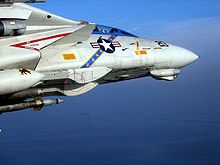
An upgraded F-14D(R) Tomcat with the ROVER transmit antenna circled. USS Theodore Roosevelt (CVN-71) is in the background.
While upgrades had kept the F-14 competitive with modern fighter aircraft technology, Cheney called the F-14 1960s technology. Despite some aggressive proposals from Grumman for a replacement, Cheney planned to replace the F-14 with a fighter that was not manufactured by Grumman. Cheney called the F-14 a "jobs program", and when the F-14 was canceled, an estimated 80,000 jobs of Grumman employees, subcontractors, or support personnel were affected.[64] Starting in 2005, some F-14Ds received the ROVER III upgrade.
Projected variants
The F-14C was a projected variant of the initial F-14B (F401-powered) with advanced multimission avionics.[65]Grumman proposed a few improved Super Tomcat versions. The first was the Quickstrike, which was an F-14D with navigational and targeting pods, additional attach points for weapons, and added ground attack capabilities to its radar. The Quickstrike was to fill the role of the A-6 Intruder after it was retired. This was not considered enough of an improvement by Congress, so the company shifted to the Super Tomcat 21 proposed design. The Super Tomcat 21 was a proposed lower cost alternative to the Navy Advanced Tactical Fighter (NATF). The Grumman design would have the same shape and body as the Tomcat, and an upgraded AN/APG-71 radar. New GE F110-129 engines were to provide a supercruise speed of Mach 1.3 and featured thrust vectoring nozzles. The version would have increased fuel capacity and modified control surfaces for improved takeoffs and lower landing approach speed. The Attack Super Tomcat 21 version was the last Super Tomcat proposed design. It added even more fuel capacity, more improvements to control surfaces, and possibly an Active Electronically Scanned Array (AESA) radar from the canceled A-12 attack aircraft.[66] The last "Tomcat" variant was the ASF-14 (Advanced Strike Fighter-14), Grumman's replacement for the NATF concept. By all accounts, it would not be even remotely related to the previous Tomcats save in appearance, incorporating the new technology and design know-how from the Advanced Tactical Fighter (ATF) and Advanced Tactical Aircraft (ATA) programs. The ASF-14 would have been a new-build aircraft; however, its projected capabilities were not that much better than that of the (A)ST-21 variants.[67] In the end the Attack Super Tomcat was considered to be too costly. The Navy decided to pursue the F/A-18E/F to fill the fighter-attack role.[66]
Operators
- Islamic Republic of Iran Air Force (IRIAF) squadrons
- 72nd TFS: F-14A, 1976–present
- 73rd TFS: F-14A, 1977–present
- 81st TFS: F-14A, 1977–present
- 82nd TFS: F-14A, 1978–present
- 83rd TFS: F-14A, re-named former 73rd TFS[68]
Former operator
- United States Navy (USN) squadrons
- Pacific Fleet
- NFWS Navy Fighter Weapons School (TOPGUN) (Merged with Strike U to form Naval Strike and Air Warfare Center (NSAWC) 1996)
- VF-1 Wolfpack (Disestablished 30 September 1993)
- VF-2 Bounty Hunters (Redesignated VFA-2 with F/A-18F 1 July 2003)
- VF-21 Freelancers (Disestablished 31 January 1996)
- VF-24 Fighting Renegades (Disestablished 20 August 1996)
- VF-51 Screaming Eagles (Disestablished 31 March 1995)
- VF-111 Sundowners (Disestablished 31 March 1995; reestablished as VFC-111 with F-5F 1 November 2006)
- VF-114 Aardvarks (Disestablished 30 April 1993)
- VF-154 Black Knights (Redesignated VFA-154 with F/A-18F 1 October 2003)
- VF-191 Satan's Kittens (Disestablished 30 April 1988)
- VF-194 Red Lightnings (Disestablished 30 April 1988)
- Atlantic Fleet
- VF-11 Red Rippers (Redesignated to VFA-11 with F/A-18F in May 2005)
- VF-14 Tophatters (Redesignated VFA-14 with F/A-18E 1 December 2001)
- VF-31 Tomcatters (Redesignated VFA-31 with F/A-18E October 2006)
- VF-32 Swordsmen (Redesignated VFA-32 with F/A-18F on 1 October 2005)
- VF-33 Starfighters (Disestablished 1 October 1993)
- VF-41 Black Aces (Redesignated VFA-41 with F/A-18F, 1 December 2001)
- VF-74 Bedevilers (Disestablished 30 April 1994)
- VF-84 Jolly Rogers (Disestablished 1 October 1995; squadron heritage and nickname transferred to VF-103)
- VF-102 Diamondbacks (Redesignated VFA-102 with F/A-18F in 1 May 2002)
- VF-103 Sluggers/Jolly Rogers (Redesignated VFA-103 with F/A-18F 1 May 2005)
- VF-142 Ghostriders (Disestablished 30 April 1995)
- VF-143 Pukin' Dogs (Redesignated VFA-143 with F/A-18E in early 2005)
- VF-211 Fighting Checkmates (Redesignated VFA-211 with F/A-18F 1 October 2004)
- VF-213 Black Lions (Redesignated VFA-213 with F/A-18F in May 2006)
- Test and Evaluation Squadrons
- Fleet Replacement Squadrons
- Naval Air Reserve Force Squadrons
- Squadron Augmentation Units
Aircraft on display
- Bureau Number (BuNo) - Model - Location - Significance
- (R): Signifies an F-14D remanufactured from an F-14A.
- 157982 YF-14A - Cradle of Aviation Museum, Garden City, New York. Prototype #3 Nonstructural Demonstration Testbed[72]
- 157984 YF-14A - National Museum of Naval Aviation, NAS Pensacola, Florida. Prototype #5 Systems Compatibility Demonstrator/Testbed
- 157986 F-14A - Intrepid Sea-Air-Space Museum, Manhattan, New York, 7th Tomcat built, retained as research and development airframe.[73]
- 158617 F-14A - Egypt VFW Post 7293 Whitehall, Pennsylvania. This particular aircraft was last used to train pilots in advanced dissimilar air combat maneuvering (dog fighting) at the Navy's "Top Gun" facility in Fallon, Nevada.
- 159025 F-14A - Flight deck of the USS Yorktown (CV-10) at the Patriot's Point Naval and Maritime Museum in Charleston, SC. Has the insignia of the "Pukin' Dogs" of the USS Dwight D. Eisenhower (CVN-69) on the tails.
- 159455 F-14A - NAS Patuxent River, Lexington Park, Maryland. Former VX-23 Flight Test Squadron Aircraft
- 159600 F-14D(R) - OV-10 Bronco Museum, Fort Worth, Texas. On loan from National Museum of Naval Aviation, Pensacola, Florida. "Christine", the longest-serving Tomcat in US Navy, remanufactured F-14 originally built in 1976, made final 2006 cruise.[74]
- 159610 F-14D(R) - Steven F. Udvar-Hazy Center, Dulles, Virginia One of the F-14s involved in the second Gulf of Sidra incident.
- 160386 F-14A- Delaware Valley Historical Aircraft Association, Horsham, Pennsyslvannia.
- 160403 F-14A - CAF Airpower Museum, Midland, Texas. First F-14 to shoot down an enemy aircraft in the First Gulf of Sidra incident.
- 160661 F-14A - U.S. Space & Rocket Center (Aviation Challenge Camp) in Huntsville, Alabama. It has the "Jolly Rogers" Insignia on left tail.
- 160889 F-14A - Pacific Coast Air Museum at Charles M. Schulz - Sonoma County Airport, Santa Rosa, California.[75]
- 160898 F-14A - Palm Springs Air Museum, Palm Springs, Califronia[76]
- 160902 F-14A - Grumman Memorial Park, Calverton, New York
- 161163 F-14D - Prairie Aviation Museum, Bloomington, Illinois. VF-213
- 161166 F-14D(R) - Carolinas Aviation Museum, Charlotte, North Carolina. VF-213, Last F-14 to launch on a combat mission (Iraq February 2006)
- 161598 F-14A - Tulsa Air and Space Museum, Tulsa, Oklahoma.[77] Has squadron VF-41, "Black Aces" markings.
- 161605 F-14A - Wings Of Eagles Discovery Center/National Warplane Museum, Horseheads, New York [78]
- 161615 F-14A - Combat Air Museum, Topeka, Kansas [79]
- 161623 F-14A - Patuxent River Naval Air Museum, NAS Patuxent River, Lexington Park, Maryland. Former VX-23 Flight Test Squadron Aircraft[80]
- 161860 F-14B - Aviation Museum of Kentucky, Blue Grass Airport, Lexington, Kentucky. From VF 32.
- 161863 F-14A - Heritage Park, NAS Jacksonville, Florida
- 162591 F-14A - Quonset Air Museum (former NAS Quonset Point, North Kingstown, Rhode Island)
- 162592 F-14A - Ronald Reagan Presidential Library, Simi Valley, California
- 162689 F-14A - USS Hornet Museum, Alameda, California
- 162694 F-14B - Military Aviation Preservation Society, Akron-Canton, Ohio
- 162926 F-14B - New England Air Museum, in the markings of VF-143 "Pukin' Dogs"
- 163902 F-14D - Hickory Aviation Museum, Hickory, North Carolina, VF-31 Tomcatters aircraft 107, Flew the retirement ceremony with Lt. Cmdr. Chris Richard and Lt. Mike Petronis at the controls.[81]
- 164342 F-14D - Wings Over Miami Air Museum, Miami, Florida, in the markings of VF-31 "Tomcatters"
- 164346 F-14D - Virginia Aviation Museum, Richmond, Virginia. On loan from National Museum of Naval Aviation, Pensacola, Florida. Last Tomcat to operationally trap aboard a US Navy carrier.[82]
- 164601 F-14D - Castle Air Museum, Atwater, California.[83]
- 164603 F-14D - Grumman Headquarters, Bethpage, New York. Felix 101 from VF-31 is the last Tomcat to fly in US Navy service. Final flight was from NAS Oceana, Virginia to the American Airpower Museum at Republic Airport Long Island, New York on 4 October 2006 were it was displayed for a year and a half before being moved to Grumman Plant 25.[84]
- 164604 F-14D - NAS Oceana, Virginia Beach, Virginia. Last F-14 built by Grumman.
Specifications (F-14D)
General characteristics
- Crew: 2 (Pilot and Radar Intercept Officer)
- Length: 62 ft 9 in (19.1 m)
- Wingspan:
- Spread: 64 ft (19.55 m)
- Swept: 38 ft (11.58 m)
- Height: 16 ft (4.88 m)
- Wing area: 565 ft² (54.5 m²)
- Airfoil: NACA 64A209.65 mod root, 64A208.91 mod tip
- Empty weight: 43,735 lb (19,838 kg)
- Loaded weight: 61,000 lb (27,700 kg)
- Max takeoff weight: 74,350 lb (33,720 kg)
- Powerplant: 2× General Electric F110-GE-400 afterburning turbofans
- Dry thrust: 13,810 lbf (61.4 kN) each
- Thrust with afterburner: 27,800 lbf (123.7 kN) each
- Maximum fuel capacity: 16,200 lb internal; 20,000 lb with 2x 267 gallon external tanks[30]
- Maximum speed: Mach 2.34 (1,544 mph, 2,485 km/h) at high altitude
- Combat radius: 500 nmi (575 mi, 926 km)
- Ferry range: 1,600 nmi (1,840 mi, 2,960 km)
- Service ceiling: 50,000 ft (15,200 m)
- Rate of climb: >45,000 ft/min (229 m/s)
- Wing loading: 113.4 lb/ft² (553.9 kg/m²)
- Thrust/weight: 0.91
- Guns: 1× 20 mm (0.787 in) M61 Vulcan 6-barreled gatling cannon, with 675 rounds
- Hardpoints: 10 total: 6× under-fuselage, 2× under nacelles and 2× on wing gloves[87][N 2] with a capacity of 14,500 lb (6,600 kg) of ordnance and fuel tanks[36]
- Missiles:
- Loading configurations:
- 2× AIM-9 + 6× AIM-54 (Rarely used due to weight stress on airframe)
- 2× AIM-9 + 2× AIM-54 + 3× AIM-7 (Most common load during Cold War era)
- 2× AIM-9 + 4× AIM-54 + 2× AIM-7
- 2× AIM-9 + 6× AIM-7
- 4× AIM-9 + 4× AIM-54
- 4× AIM-9 + 4× AIM-7
- Bombs:
- JDAM Precision-guided munition (PGMs)
- Paveway series of Laser guided bombs
- Mk 80 series of unguided iron bombs
- Mk 20 Rockeye II
- Others:
- Tactical Airborne Reconnaissance Pod System (TARPS)
- LANTIRN targeting pod
- 2× 267 USgal (1,010 l; 222 imp gal) drop tanks for extended range/loitering time
- Hughes AN/APG-71 radar
- AN/ASN-130 INS, IRST, TCS
- Remotely Operated Video Enhanced Receiver (ROVER) upgrade
Notable appearances in media
Main article: F-14 Tomcat in fiction



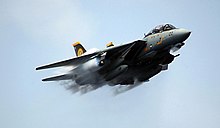


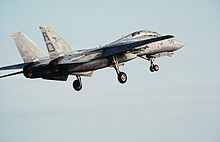




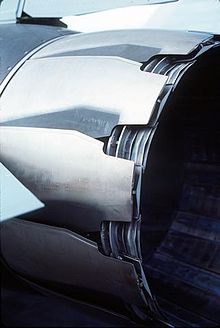
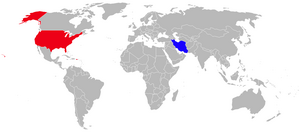

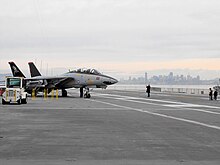

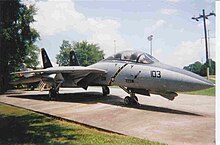
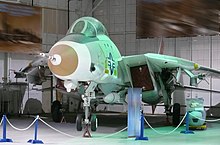
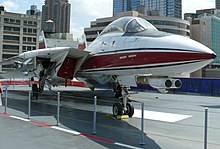



No comments:
Post a Comment